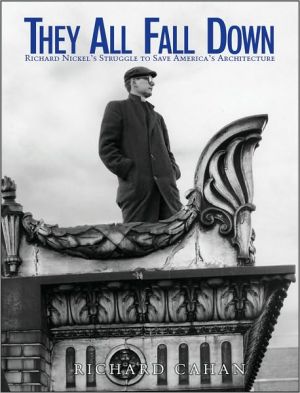They All Fall Down: Richard Nickel's Struggle to Save America's Architecture
"Richard Nickel, whom I had the delight of knowing during his all too brief life, is one of the unsung heroes of Chicago architecture. He was not an architect himself, nor a designer. He simply took pictures, but what pictures! He was, for want of a better description, one of the most sensitive of architectural photographers. More than that, his life—and ironically, tragically and poetically, his death—were fused to Chicago architecture. How he died tells us how he lived: for the beauty in...
Search in google:
"Richard Nickel, whom I had the delight of knowing during his all too brief life, is one of the unsung heroes of Chicago architecture. He was not an architect himself, nor a designer. He simply took pictures, but what pictures! He was, for want of a better description, one of the most sensitive of architectural photographers. More than that, his life—and ironically, tragically and poetically, his death—were fused to Chicago architecture. How he died tells us how he lived: for the beauty in the works of Sullivan, Wright and the others. His story is one that must be told." —Studs Terkel, author "He was completely understanding of architecture and genius and of the quality of the work he was dealing with. He was single-minded in his pursuit and dedication to quality in history, art and architecture. That is an increasingly rare quality." —Ada Louise Huxtable, former New York Times architecture critic "Richard was an excellent photographer—sensitive and intelligent, and a very good craftsman". —John Szarkowski, former Director, Photography, Museum of Modern Art, New York "Richard Nickel was one of those who saw architecture, and who passionately and skillfully pursued its portrayal. He was one of a very small number, and to make his work known would be a fundamental service to architects, students, and teachers as well as to the art of architecture." —Edgar Kaufmann, Jr., architectural historianBookListYou wouldn't expect to read about a photographer when you research American architecture, but Richard Nickel is an integral part of the story. A shy yet passionate man, Nickel developed a deep love for architecture and great skill as an architectural photographer. He also became one of the first to publicly demand the preservation of landmark buildings in Chicago, his hometown. Nickels would, undoubtedly, have been remembered for his stunning photographs and preservationist zeal, but his tragic, martyr-like death in the rubble of the once magnificent Stock Exchange Building in 1972 ensured his immortality. Cahan tells Nickel's story with tremendous empathy, setting it within a history of Chicago architecture, especially the work of Nickel's idol, Louis Sullivan. Nickel set himself the task of finding and documenting all of Sullivan's creations but soon discovered that many of those glorious structures were suffering from neglect or, worse, were about to become victims of urban renewal. The master photographer became a witness to those thoughtless demolitions, meticulously documenting the demise of buildings he loved. Not content with pictures, Nickel also became a devoted salvager of Sullivan ornament, enabling museums to preserve fragments of Sullivan's art. Now Cahan has preserved Nickel's memory in this handsome volume illustrated by more than 70 of Nickel's photographs.
\ Donna SeamanYou wouldn't expect to read about a photographer when you research American architecture, but Richard Nickel is an integral part of the story. A shy yet passionate man, Nickel developed a deep love for architecture and great skill as an architectural photographer. He also became one of the first to publicly demand the preservation of landmark buildings in Chicago, his hometown. Nickels would, undoubtedly, have been remembered for his stunning photographs and preservationist zeal, but his tragic, martyr-like death in the rubble of the once magnificent Stock Exchange Building in 1972 ensured his immortality. Cahan tells Nickel's story with tremendous empathy, setting it within a history of Chicago architecture, especially the work of Nickel's idol, Louis Sullivan. Nickel set himself the task of finding and documenting all of Sullivan's creations but soon discovered that many of those glorious structures were suffering from neglect or, worse, were about to become victims of urban renewal. The master photographer became a witness to those thoughtless demolitions, meticulously documenting the demise of buildings he loved. Not content with pictures, Nickel also became a devoted salvager of Sullivan ornament, enabling museums to preserve fragments of Sullivan's art. Now Cahan has preserved Nickel's memory in this handsome volume illustrated by more than 70 of Nickel's photographs.\ \








